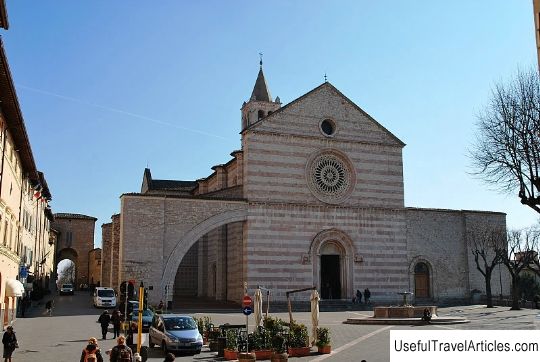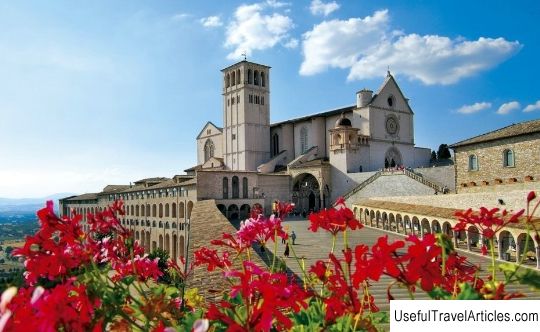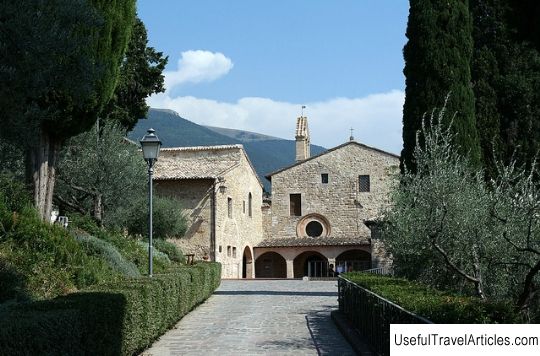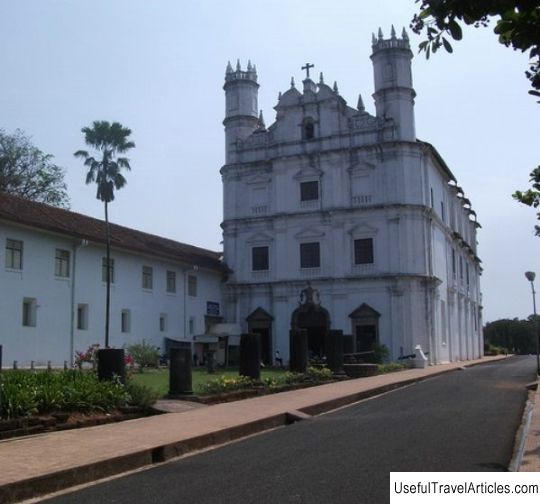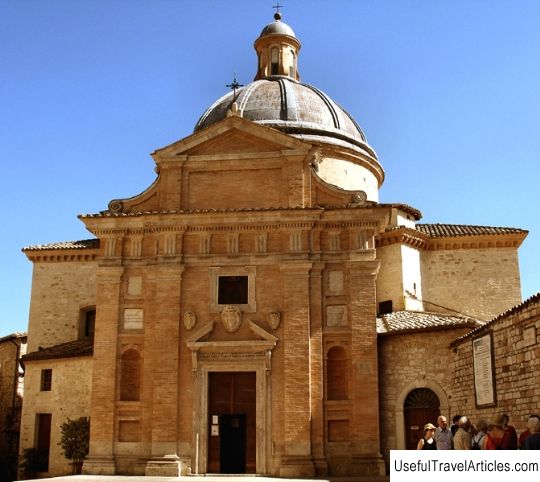Assisi Cathedral (Cattedrale di Assisi) description and photos - Italy: Assisi
Rating: 7,5/10 (786 votes) 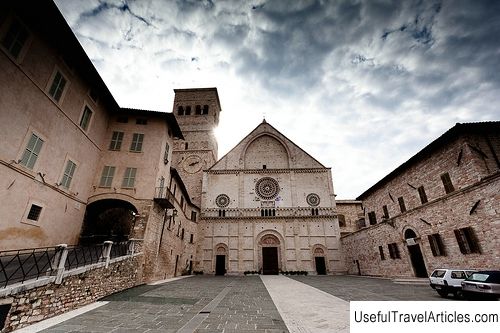
Assisi Cathedral (Cattedrale di Assisi) description and photos - Italy: Assisi. Detailed information about the attraction. Description, photographs and a map showing the nearest significant objects. The title in English is Cattedrale di Assisi. Photo and descriptionAssisi Cathedral, dedicated to Saint Rufinus, the city's first bishop, is the main church of Assisi. This church played an important role in the history of the Franciscan order. It was here that Saint Francis of Assisi (1182), Saint Clara (1193) and many of their followers were baptized. Here, in 1209, Francis read his ardent sermon, which turned the life of a simple girl Clara and, according to her, turned her on the right path. The monk Tommaso da Celano, the author of three hagiographies of St. Francis of Assisi, writes that he himself once saw Francis praying in the cathedral, and at the same time others saw him jumping on a chariot of fire in the Porzuncola church, 4 km from Assisi. The majestic Romano-Umbrian cathedral is the third church built on this site to store the relics of Bishop Rufino, who was martyred in the 3rd century. Its construction began in 1140 under the direction of the architect Giovanni da Gubbio, as indicated by the inscription on the wall of the apse. In 1228, during his stay in Assisi for the canonization of St. Francis, Pope Gregory IX consecrated the main altar of the cathedral. And Pope Innocent IV attended the opening ceremony of the new temple in 1253. The church's Romanesque facade is made of stone and is a typical example of the 12th century Umbrian style. It is divided into three parts: in the upper one you can see an empty semicircular arch, which probably should have contained a mosaic or frieze, the middle one is divided by two columns, located in one straight line with the upper arch, and is decorated with rosette windows, and the lower one consists of three decorated stone portals with griffins. The middle portal especially stands out for its rich decoration: in the arched opening above it you can see a bas-relief depicting Christ sitting on a throne between the sun and the moon, the Virgin Mary and Saint Rufinus. To the left of the facade rises a square bell tower, built in the 11th century. Then she stood behind the apse of the previous church, built by Bishop Hugo in 1029. The upper part of the bell tower dates back to the 13th century, and its foundation lies on the ruins of an ancient Roman reservoir. The building to the side of the bell tower has been identified as the home of St. Clara. In 1571, the interior of the cathedral, originally made in the Romanesque style, was completely redone in the late Renaissance style by the architect Gian Galeazzo Alessi from Perugia. The current church inside consists of a central nave, two side chapels separated by massive columns, an apse and a dome. The baptismal font in which Saints Francis and Clara were baptized has survived to this day - it is located in the right aisle. The baptismal font is made of an antique granite column and is surrounded by an iron gate. There is also the Chapel of the Holy Gifts, built in the Baroque style in the 16-17th centuries and decorated with frescoes. And the chapel of the Blessed Virgin Mary of Consolation was built in 1496. More recently, a 15th-century terracotta statuette depicting the Virgin Mary mourning for Jesus Christ was stolen from it. In its place today stands an exact wooden copy. The main altar of the cathedral is located directly under the dome and above the burial place of St. Rufin. On both sides of it there are sculptures of Saints Francis and Clara. And in the apse you can see the magnificent choir with 22 carved seats and a statue of Saint Rufin in the center. Under the cathedral there is a crypt with an ancient Roman sarcophagus, in which the remains of Rufin once rested. Here you can also see the ruins of a 10th-century cloister (Carolingian era). In 1941, the Museum of the Cathedral and the Crypt of San Rufino was opened, which today houses some works of art - an antique sarcophagus, frescoes, reliquaries, shrines and several religious paintings.        We also recommend reading ”Baiterek” monument description and photo - Kazakhstan: Nur-Sultan Topic: Assisi Cathedral (Cattedrale di Assisi) description and photos - Italy: Assisi. |
